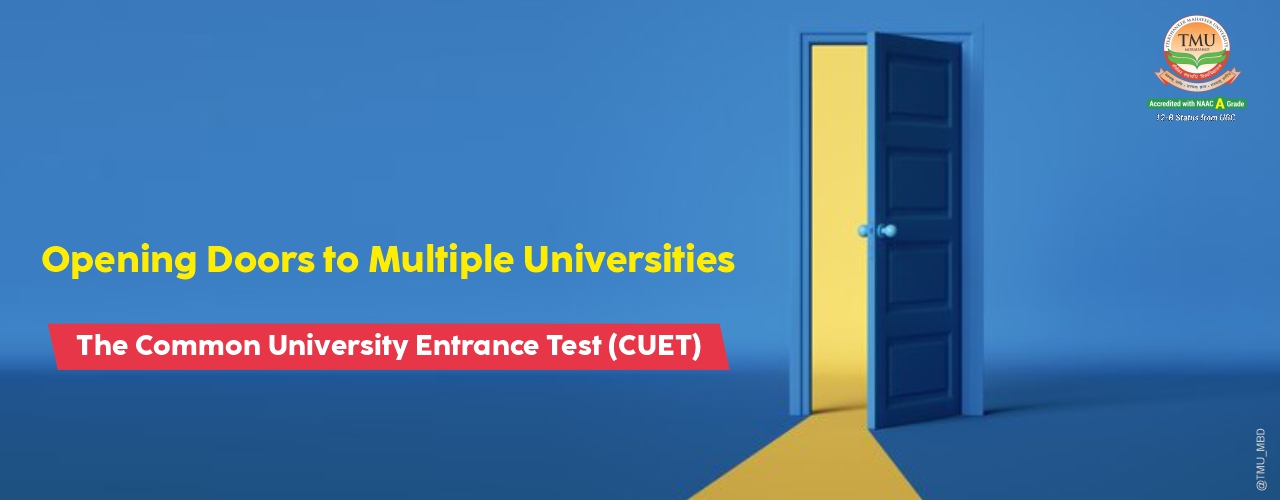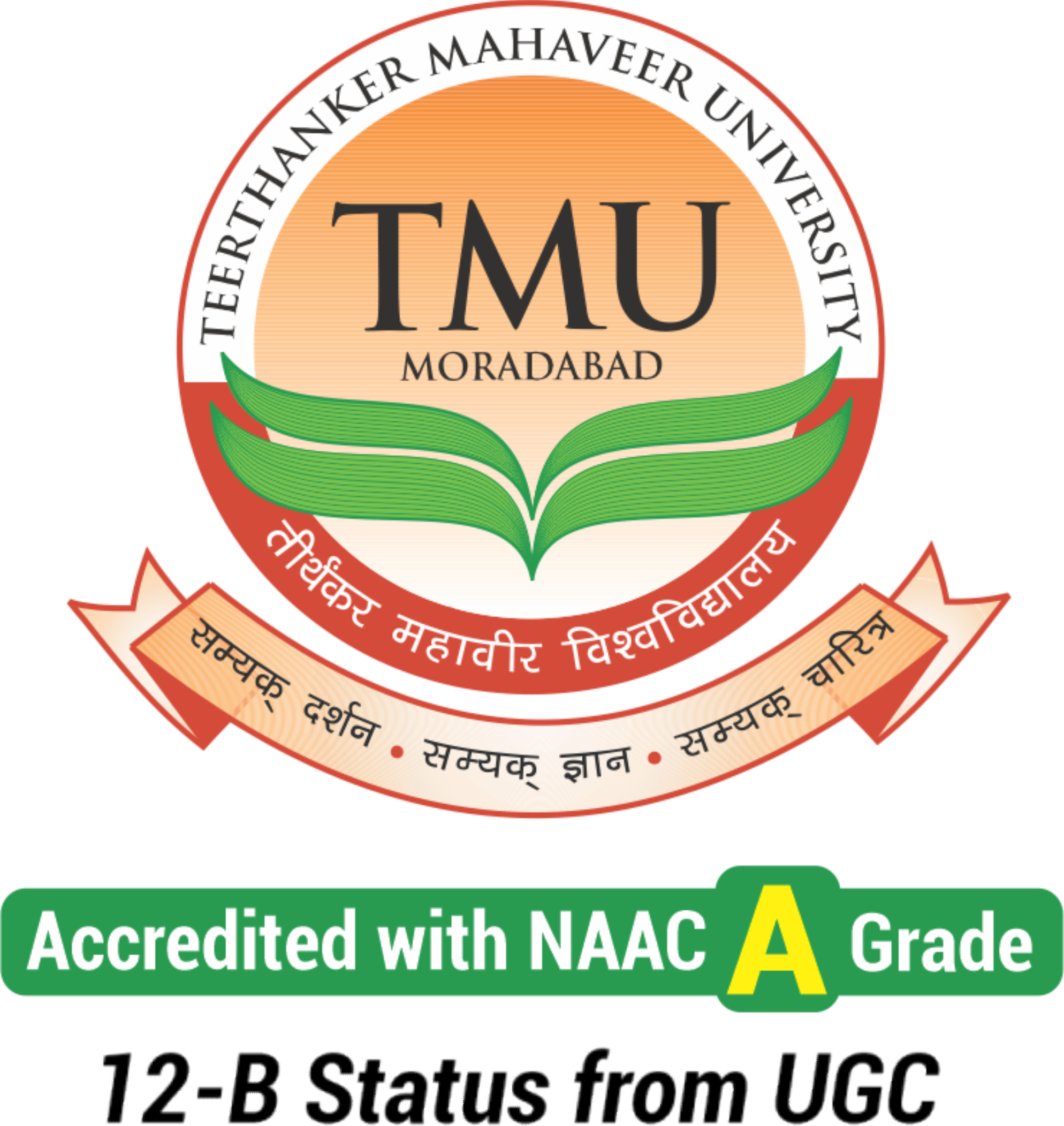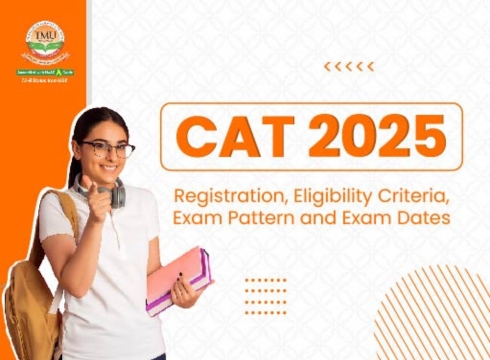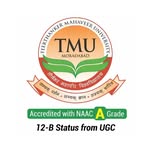Opening Doors to Multiple Universities The Common University Entrance Test (CUET)
Table of Contents
Common University Entrance Test (CUET) is a standardised examination conducted for admission into various undergraduate, postgraduate, and research courses offered by central universities in India. It streamlines the admissions process by providing admissions a common platform for evaluating candidates' aptitude and knowledge across diverse disciplines.
One of the primary benefits of CUET is that it simplifies the application process for students. Instead of appearing for multiple entrance exams for different universities, students can take a single test, which reduces stress and financial burden. This uniformity ensures that students are evaluated on a common scale, promoting fairness and transparency in the admission process.
Common University Entrance Test benefits a wide range of stakeholders. Students gain from a straightforward and equitable admission procedure, universities benefit from a consistent method of assessing applicants, and the overall higher education system in India becomes more organised and efficient.
The necessity of the CUET arises from the growing demand for a streamlined and efficient admission process in India's higher education sector. With numerous central universities each having their own entrance exams, the process was fragmented and cumbersome. The CUET addresses these issues by providing a unified examination that simplifies admissions and ensures a standardised evaluation of all candidates.
CUET Full Form
CUET stands for "Common University Entrance Test." It aims to assess the academic aptitude and potential of students applying for courses such as engineering, medicine, law, and other disciplines.
Common University Entrance Test scores often play a crucial role in determining admission eligibility and merit-based scholarships at participating universities. It's designed to provide a fair and transparent evaluation process for all applicants across different educational backgrounds.
Teerthanker Mahaveer University
Apply for Admission
Click Here To Apply for Admission
What is CUET?
CUET stands for the Common University Entrance Test. It's a single entrance exam for admission into various undergraduate courses across many Indian universities. It acts like a gateway, replacing the need for multiple university-specific exams.
Common University Entrance Test Exam Dates and Schedule
The exact dates and schedule for the CUET exam can vary slightly from year to year. However, here's a general idea of what to expect:
- Application Period:The application window typically opens a few months before the exam, usually inDecember or January. You can find the exact dates on the official NTA website
- Exam Dates:The CUET exam itself is usually conducted over10-15 days,sometime inMay. Again, the specific dates will be announced by the NTA closer to the exam.
- Exam Schedule:The specific dates and timings for your exam will depend on the course or subjects you choose. The NTA will release a detailed exam schedule, mentioning the allocated dates and slots for different subjects. They might publish this information after the application window closes.
Common University Entrance Test Syllabus 2025
CUET 2025's syllabus is likely to be released by the National Testing Agency (NTA) sometime in the next few months, possibly around October–November 2025, but here is what you can expect based on past information:
Overall Structure:
- Divided into four sections:
- Section IA: Languages (13 languages offered): Students choose one language.
- Section IB: Optional Languages (20 languages offered) Students choose one language (optional).
- Section II: Domain-Specific Subjects (27 subjects offered) - Students choose subjects based on their course choices.
- Section III: General Test (compulsory)
Content Focus:
- Languages (IA & IB):Focuses on reading comprehension, vocabulary building, grammar usage, and basic writing skills in the chosen language(s).
- Domain-Specific Subjects (II):The syllabus varies depending on the subject. It typically covers the core concepts and knowledge areas relevant to the chosen field of study, mirroring the CBSE Class 12 curriculum to a large extent.
- Science subjects (Physics, Chemistry, and Biology) will emphasise fundamental scientific principles and their applications.
- Commerce subjects (Business Studies, Accountancy, and Economics) will focus on commerce-related concepts like accounting principles, economic theories, and business practices.
- Humanities subjects (History, Geography, Political Science, Sociology, and Psychology) will cover historical events, geographical concepts, political systems, social structures, and psychological principles.
General Test (III):Assesses general knowledge, current affairs, logical reasoning, analytical abilities, and basic numerical skills. This section might include questions on arithmetic operations, data interpretation, and basic knowledge of recent events.
Here's how to find the official syllabus once it's released:
- The National Testing Agency (NTA) is likely to release the official syllabus for CUET 2025 on their website sometime in the future. Keep checking this website for updates.
- Reputable educational websites might also publish summaries or analyses of the official syllabus once it's released.
CUET Preparation Books
While the syllabus for CUET 2025 isn't available yet, some resources can still be helpful for your preparation. Here are some tips for choosing CUET preparation books:
- Focus on NCERT Books:NCERT books are a great foundation for preparing for the CUET exam, especially for Section II: Domain-Specific Subjects. These books cover the CBSE Class 11 and 12 curriculum, CUET.
Subject-Specific Reference Books:Once you have a grasp of the NCERT books, you can supplement your preparation with subject-specific reference books. Here are some popular options, depending on the subject you choose:
- Physics: Concepts of Physics by H.C. Verma, Fundamentals of Physics by Halliday, Resnick and Walker
- Chemistry: Modern's ABC of Chemistry by S.P. Manchanda, Chemistry for JEE (Main & Advanced) by R.D. Sharma
- Biology: Biology by Campbell Reece, Objective Biology by D.P. Aggarwal
- Mathematics: Mathematics for Classes 11 & 12 by R.D. Sharma, Arihant Mathematics (JEE)
- : Wren and Martin's High School English Grammar & Composition, Objective General English by SP Bakshi
General Test Preparation:For the General Test section, books focusing on logical reasoning, analytical abilities, and quantitative aptitude can be beneficial.
Mock Tests and Sample Papers:Practicing with mock tests and sample papers familiarises you with the CUET exam format, time management, and question types. Many coaching institutes and educational websites offer these resources.
CUET English Syllabus 2025
| Skill Assessed | Description |
| Reading Comprehension | - Passages from various genres (fiction, non-fiction, etc.) - Test comprehension, inference, vocabulary analysis |
| Grammar & Usage | - Covers all parts of speech - Sentence structure and syntax - Tenses, subject-verb agreement - Modifiers, clauses, articles, prepositions |
| Vocabulary | - Synonyms & antonyms, word meaning & usage - Idioms & phrases, one-word substitutions - Homophones & homonyms |
| Writing Skills | - Essay writing (formal & informal) - Precis & paragraph writing - Report writing |
| Literature | - Appreciation & analysis of prose, poetry, drama - Understanding literary devices - Questions on literary passages |
| Verbal Ability | - Error detection & correction - Sentence improvement - Para jumbles & fill in the blanks |
Common University Entrance Test GK Questions
| Subject | Question |
| History |
|
Geography |
|
Indian Polity |
|
Economy |
|
Science and Technology |
|
Current Affairs |
|
Sports |
|
Art and Culture |
|
Common University Entrance Test Exam Pattern
CUET Exam Pattern
The CUET exam has been divided into the following four sections:
| Feature | Description |
| Exam Type | Pen-and-paper based test |
| Duration | Typically 2 hours per subject |
| Sections | |
| * Languages | One or two languages (English, Hindi, and regional options) |
| * Domain-Specific Subjects | 4 subjects were chosen based on the desired program (e.g., Physics, History) |
| * General Test | General knowledge, reasoning abilities, and current affairs |
| Question Types | Mostly Multiple Choice Questions (MCQs) |
| Marking Scheme | |
| * Correct Answer | Awarded marks |
| * Incorrect Answer | May have a penalty (negative marking) |
CUET Exam Difficulty Level
| Section | Difficulty Level | Example (May 16, 2025 Exam) |
| Overall | Moderate | |
| General Test | Easy to Moderate | English, Data Interpretation, Numerical Aptitude, Reasoning |
| Section IA & IB (Languages) | Easy to Moderate | English (reading comprehension, synonyms, antonyms, idioms) |
| Section II (Domain Subjects) | Moderate | Economics, Hindi, Physics, Mathematics |
In Physics, the topics of Electrostatics, Magnetic Effects, and optics were asked along with other chapters. In Mathematics, questions were asked about Relations & Functions, Matrices, Differentiation, Integration, vectors, etc.
CUET Exam Preparation Tips
Here are CUET prep tips in a nutshell:
- Know the syllabus and exam pattern (NTA website).
- Build a base with NCERT books for your subjects.
- Use reference books for deeper understanding (Physics: H.C. Verma, etc.).
- Practice logical reasoning and quantitative aptitude for the General Test.
- Take mock tests and solve sample papers regularly.
- Make study notes and revise often for better recall.
- Stay updated on current affairs for the General Test.
- Prioritise sleep, healthy food, and breaks to manage stress.
Common University Entrance Test Eligibility Criteria
CUET Eligibility Criteria
The key eligibility criteria for CUET 2025 are:
- Educational Qualification: Candidates must have passed Class 12 or an equivalent examination in 2025.
- Age Limit: There is no age limit to appear for the CUET exam.
- Nationality: The candidate must be an Indian citizen.
- Number of Attempts: There is no limit on the number of times a candidate can appear for the CUET exam, as long as they meet the eligibility criteria.
CUET Reservation Policy
The CUET exam follows the reservation policy set by the Government of India:
- Scheduled Castes (SC): 15% reservation
- Scheduled Tribes (ST): 7.5% reservation
- Other Backward Classes (Non-Creamy Layer) (OBC-NCL): 27% reservation
- Persons with Disabilities (PwD): 5% reservation
Candidates belonging to these reserved categories need to meet the relaxed eligibility criteria of 45% marks in Class 12.
CUET Participating Universities
The CUET exam is accepted by over 400 participating universities, including:
- Central Universities
- State Universities
- Deemed Universities
- Private Universities
Candidates should check the specific eligibility criteria set by the universities they are applying to, as it may vary.
Common University Entrance Test Admission Process
The CUET admission process involves several stages:
- Registration: Apply online during the application window (typically Dec-Jan) on the NTA website. Choose the universities and programs you're interested in and the subjects you'll be tested on.
- Appear for the Exam: Take the CUET exam in May, following the online format and schedule provided by NTA.
- Check Cut-offs: Each university releases its minimum eligibility score (cut-off) for various programs based on CUET results.
- Apply to Universities: If your score meets the cut-off for your desired program, apply directly to the chosen universities. They might have additional requirements.
- Counselling & Seat Allocation: Universities might conduct counselling sessions to shortlist candidates based on their CUET scores, other qualifications, and preferences. This might involve document verification.
- Admission Confirmation:Once a seat is allocated, confirm your admission by paying the required fees and submitting the necessary documents to the university.
Common University Entrance Test Counselling Process
The CUET counselling process is handled by individual universities, not centrally by the NTA. Here's a breakdown of what to expect:
Eligibility:
- You must have appeared for the CUET exam and secured a score that meets the cut-off for your desired program at a particular university.
Stages:
- University Announcement:
- Each university will announce its counselling schedule and process on its official website after the declaration of CUET results (usually in June/July).
- Registration:
- Register online on the specific university's admission portal using your CUET application number and roll number.
- Choice Filling:
- You might be asked to fill out a preference form, indicating your choices for various programs offered by the university based on your CUET score and eligibility.
- Cut-offs & Merit List:
- Universities will release program-specific cut-offs based on the difficulty level of the CUET exam, the number of applicants, and available seats.
- They will then prepare a merit list of eligible candidates ranked according to their CUET scores (and other criteria, if applicable).
- Counselling Sessions (Optional):
- Some universities might conduct counselling sessions (online or offline) where shortlisted candidates can interact with representatives and discuss their options.
- Seat Allocation:
- Based on the merit list, program preferences, and seat availability, universities will allocate seats to candidates. You might be notified via email or the university portal.
- Document Verification:
- Selected candidates will need to report to the university for document verification (certificates, mark sheets, etc.) as mandated by the program.
- Admission Confirmation:
- Once documents are verified and you accept the allocated seat, you'll need to pay the admission fees and complete any remaining formalities to confirm your admission.
Common University Entrance Test Cut-off Marks
There are no centralised CUET cut-off marks. Here's why:
- University-Based: Each participating university sets its own minimum eligibility score (cut-off) for admission into various programs.
- Factors Affecting Cut-Offs: Several factors influence cut-offs, including:
- Difficulty level of the CUET exam for a particular year.
- Number of applicants for a specific program at a university.
- Number of seats available in the program.
- Reservation policies of the university.
Common University Entrance Test Results
The Common University Entrance Test (CUET) is a pivotal exam for students seeking admission to various universities. Understanding its results is crucial for planning your academic future effectively. This guide delves into every aspect of the CUET results, from how they are calculated to what they mean for your university admissions.
The CUET results are a significant milestone for students. They determine eligibility for numerous universities, setting the stage for your higher education journey. In this section, we will explore why these results matter so much and how they influence your academic path.
The primary source for CUET results is the official CUET website. This site is managed by the organizing body of the exam and is the most reliable place to check your results. Here ’s how you can access your results on the official CUET website.
For CUET UG (Undergraduate Programs):
- Website:
For CUET PG (Postgraduate Programs):(This might not be applicable yet for the 2024 results)
- Website:
Conclusion
The Common University Entrance Test (CUET) presents a significant step forward for India's higher education system. By streamlining the admissions process, CUET offers numerous benefits for students, universities, and the overall educational landscape. Students gain a simplified and fairer method for securing admission into their desired programs. Universities can now evaluate candidates more efficiently using a standardised assessment. The entire system becomes more organised and efficient, paving the way for a brighter future for higher education in India.
If you're aspiring to pursue higher education in India, familiarising yourself with CUET is crucial. By understanding the exam format, syllabus, and preparation strategies, you can increase your chances of success and gain admission into your dream program. Remember, with dedication and the right approach, CUET can be your gateway to a bright academic future.
Disclaimer: The information provided above is based on online sources and past exam patterns. Facts may change over time. For the most accurate and up-to-date information, please visit the official CUET website.
Disclaimer: The information provided above is based on online sources and past exam patterns. Facts may change over time. For the most accurate and up-to-date information, please visit the official CUET website.
FAQs
Q1: What is the official website of CUET 2025?
Ans:The official website for CUET 2025 iscuetug.ntaonline.in
Q2: How to prepare for CUET UG 2025 exam?
Ans:Master CUET syllabus and exam format. Build a base with NCERT books. Practice mock tests and revise regularly. Focus on logic, reasoning, and current affairs. Consistency and effective strategies are key.
Q3: Does CUET have 2 attempts?
Ans:No, CUET does not have a limit on attempts. As of today, June 28, 2024, candidates can appear for the CUET examas many times as they desireas long as they meet the eligibility criteria set for that year. This means you can retake the exam to improve your score for the universities you're targeting.
Q4: Is NCERT enough for CUET?
Ans:NCERT books are great for CUET prep, but not enough alone. They provide a strong foundation but lack practice questions and advanced topics. Use them to build a base, then supplement them with reference books, mock tests, and practice problems to refine your skills and tackle tougher concepts.















